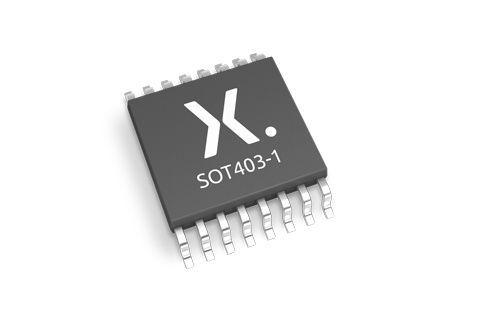International SIM Cards Explained: Learn, Discover, and Get Expert Suggestions
International SIM cards are mobile phone SIM cards designed to work in multiple countries without the need to change SIMs for each destination. They allow travelers to make calls, send messages, and use mobile data across borders, often at more affordable rates than traditional roaming services.
The concept emerged in the early 2000s as global travel increased and mobile networks evolved to support GSM, LTE, and now 5G technologies. Instead of being tied to one local provider, these SIM cards partner with multiple carriers worldwide, providing coverage in dozens or even hundreds of countries.
Importance – Why International SIM Cards Matter Today
With globalization, more people are crossing borders for work, leisure, and education. Staying connected while abroad has become essential, not just for convenience but for safety and productivity.
Key reasons international SIM cards are important:
Cost savings: Avoid high roaming charges from home network providers.
Convenience: Use a single number across multiple destinations.
Reliability: Access networks from multiple local providers in case one has poor coverage.
Flexibility: Choose data, call, and SMS plans that fit travel needs.
Compatibility with travel patterns: Ideal for multi-country itineraries without frequent SIM swaps.
| Traditional Roaming | International SIM Card |
|---|---|
| Expensive daily or per-MB rates | Lower rates and pre-paid packages |
| Single network coverage | Multiple partner networks |
| Requires home provider | Independent of home provider |
| Billing after usage | Prepaid control of costs |
Recent Updates – Trends and News from the Past Year
International SIM cards have evolved significantly in recent years, especially with the rise of eSIM technology.
Key updates from 2024–2025:
eSIM adoption: Many providers now offer eSIMs that can be activated instantly without physical delivery (notable growth since mid-2024).
5G expansion: Networks in over 70 countries now offer 5G compatibility for international SIMs (GSMA report, March 2025).
Multi-profile support: Some eSIMs allow multiple data plans to be stored and switched instantly.
Integration with travel apps: Companies like Airalo and Holafly have integrated SIM purchase and activation directly into travel booking platforms.
Regional SIM offerings: Providers now offer specialized SIMs for continents (e.g., Europe-only, Asia-only) to reduce costs for region-specific travel.
These changes make international SIM cards more accessible, cost-effective, and easy to set up compared to a decade ago.
Laws and Policies – Regulatory Impact on International SIM Cards
Regulations affecting international SIM cards vary by country and region. Some of the main considerations include:
KYC (Know Your Customer) Rules: Many countries require SIM card registration using valid identification (e.g., passport).
Roaming Regulations:
In the European Union, “Roam Like at Home” rules allow EU residents to use their domestic plan across EU countries without extra charges.
In non-EU countries, local telecom regulations may limit how long a foreign SIM can be active.
Import Restrictions: Some countries limit or prohibit the use of SIM cards purchased abroad.
Data Privacy Laws: Telecom providers must comply with data protection regulations such as GDPR in Europe.
Network Compatibility: Frequency bands and technology standards (GSM, LTE, 5G) vary by country, influencing which SIMs work where.
Travelers should always check local telecom laws before arrival to avoid service interruptions or fines.
Tools and Resources – Helping You Use International SIM Cards Efficiently
Several tools, apps, and services can make it easier to choose and manage an international SIM card.
Comparison Websites:
SIMOptions – Compare plans from multiple international SIM providers.
MySIMTravel – Search based on destination and usage needs.
eSIM Apps:
Airalo – Global and regional eSIMs with instant activation.
Holafly – Unlimited data options for selected destinations.
Nomad eSIM – Flexible data packages for short-term or long-term travel.
Coverage Maps:
OpenSignal – Shows network performance by location.
GSMA Coverage Maps – Industry-standard coverage database.
Cost Calculators:
Provider-specific calculators to estimate data usage and costs.
Travel Forums:
TripAdvisor and Reddit r/travel – Real traveler reviews of SIM performance in specific regions.
FAQs – Clear and Factual Answers
Q1: Can I use an international SIM card in any phone?
Most international SIM cards work in unlocked GSM-compatible phones. For eSIMs, your phone must also support eSIM technology.
Q2: Are eSIMs better than physical SIM cards for international travel?
eSIMs offer faster setup and no need to swap physical cards, but physical SIMs may still be preferable in areas with limited eSIM adoption or for older devices.
Q3: How do I choose the best international SIM card?
Consider your travel destinations, expected data usage, budget, and whether you need calls and SMS. Compare coverage maps and rates before purchasing.
Q4: Are there any hidden costs with international SIM cards?
Most reputable providers list all charges upfront. However, exceeding your plan’s data or call limits may result in extra fees. Always check the terms before buying.
Q5: Can I keep my home number while using an international SIM?
Yes, but your home SIM must remain active (often in a dual-SIM phone) for receiving calls or texts to your home number.
Final Thoughts
International SIM cards have become an essential travel tool, offering affordable, flexible, and reliable connectivity across borders. The growth of eSIM technology, expanded 5G coverage, and integration with travel platforms have made them easier to use than ever.
For anyone planning multi-country travel whether for work, leisure, or study investing time in comparing providers, understanding local regulations, and selecting the right plan can lead to significant savings and a smoother travel experience.





